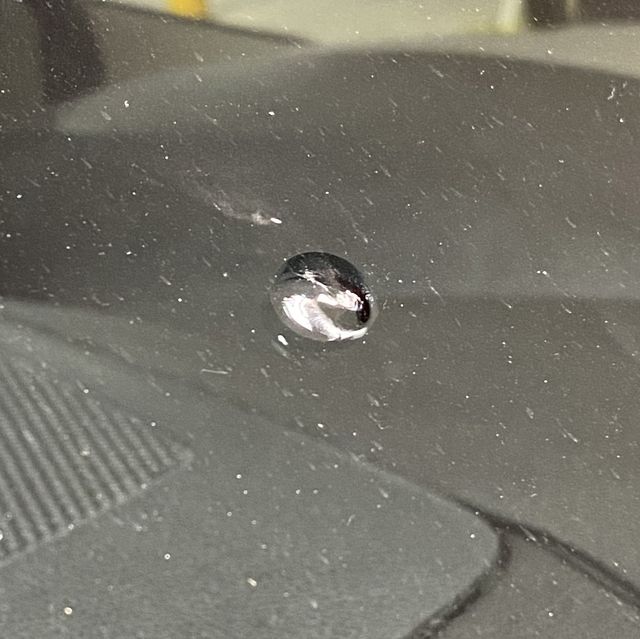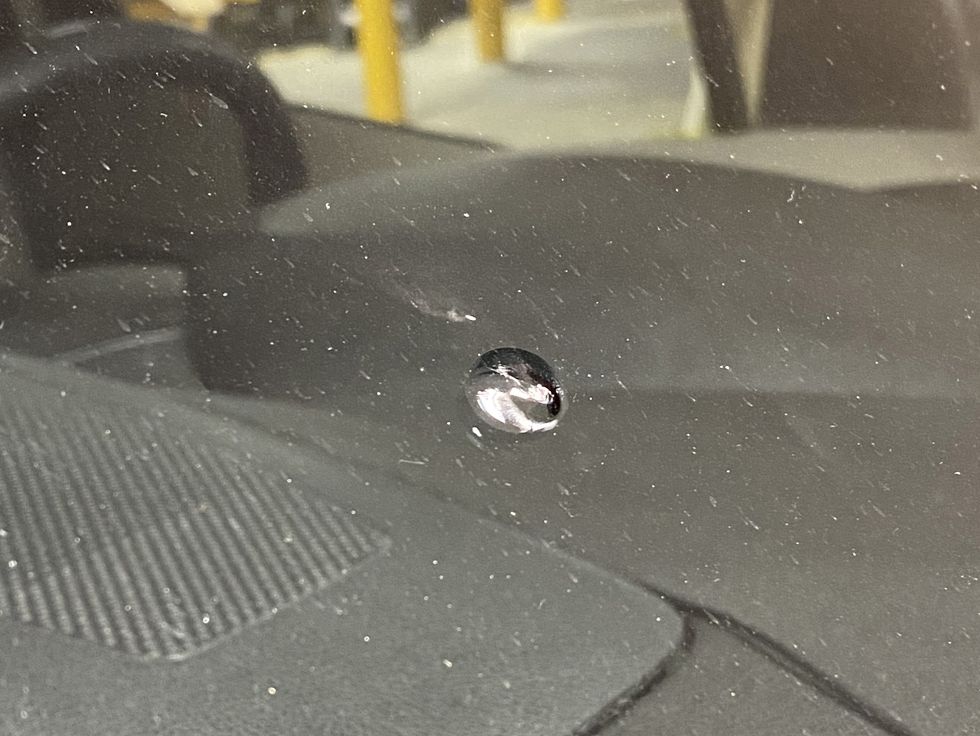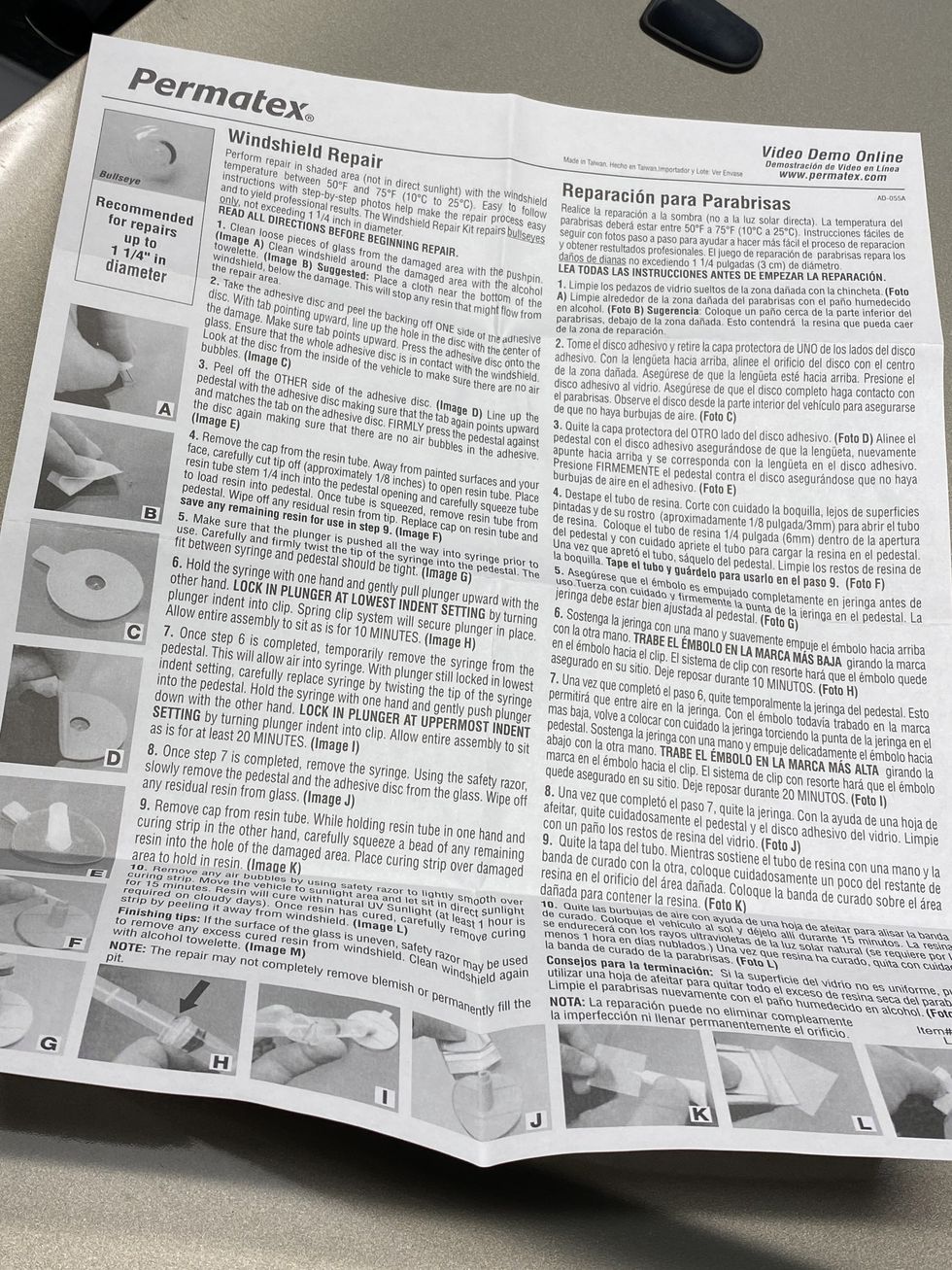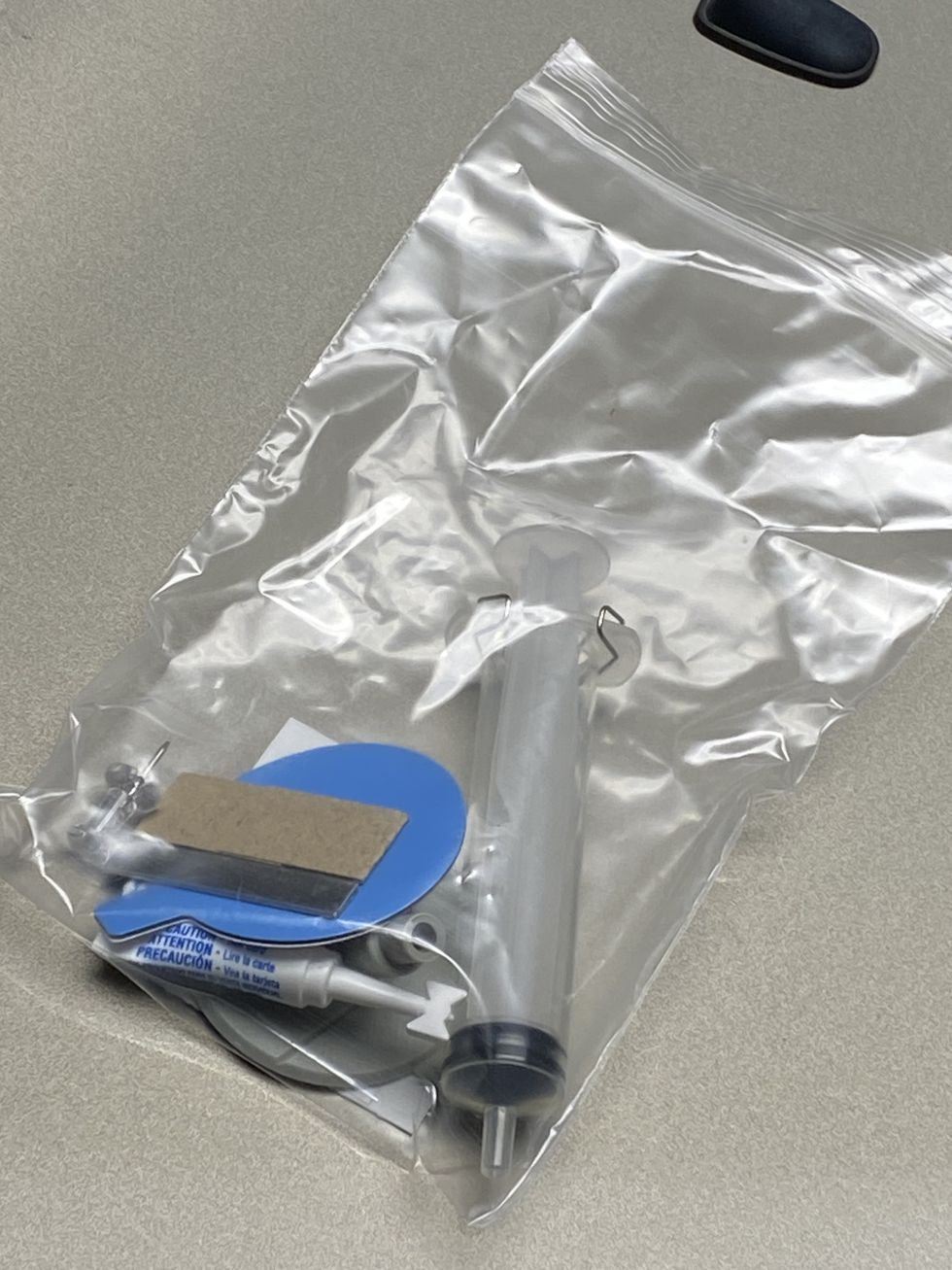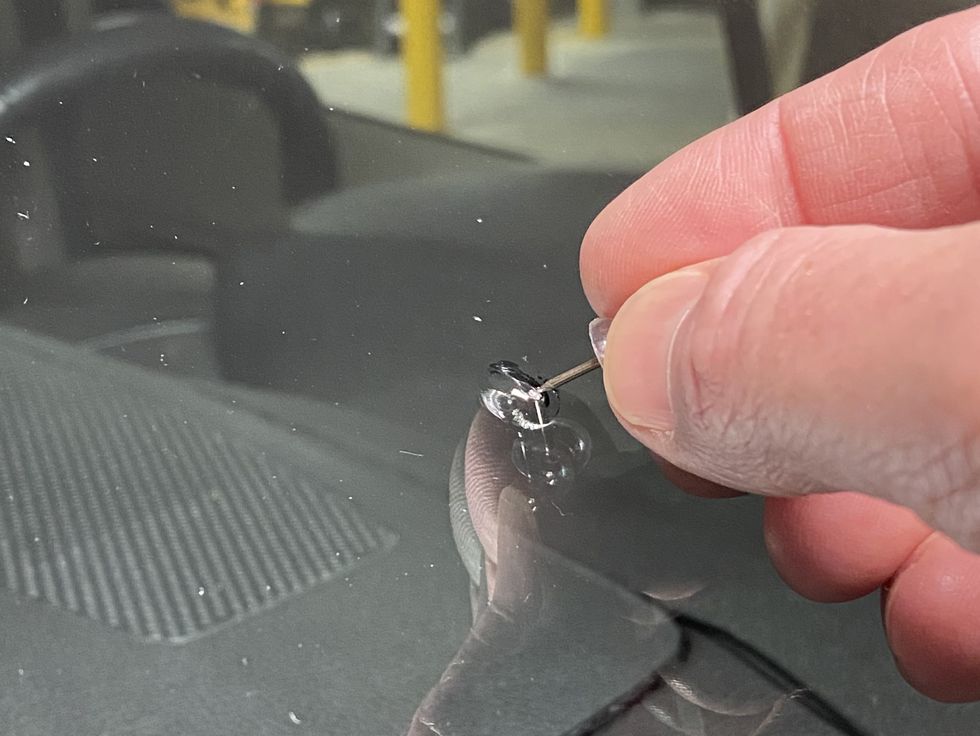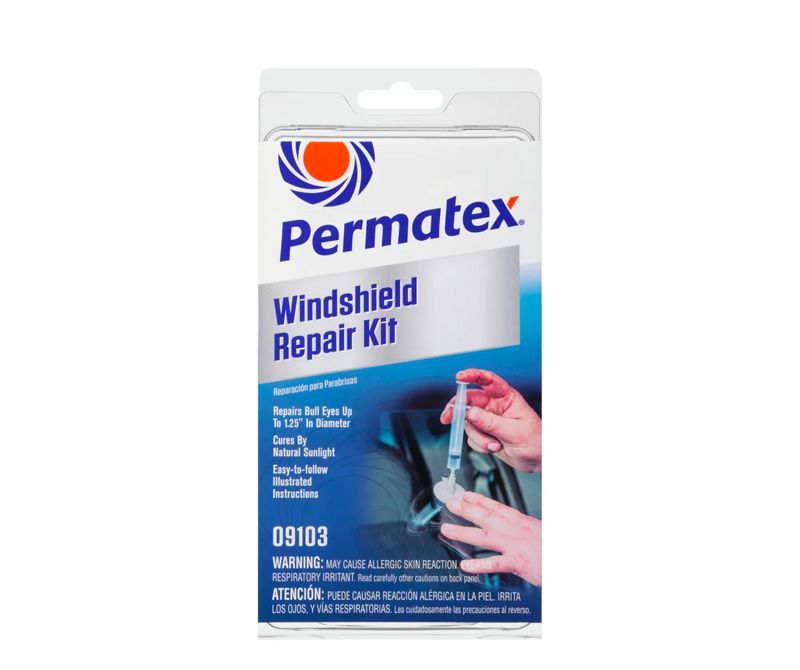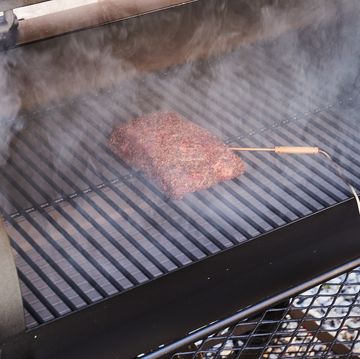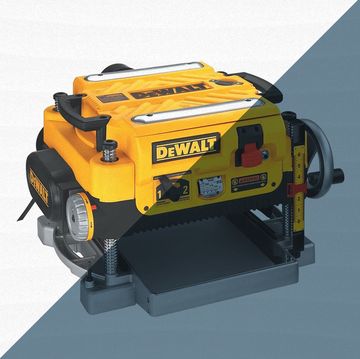The Takeaway: All it takes is a wayward rock kicked up in traffic to ruin an evening, as it did for me heading home on night recently. I pulled over to inspect the damage and found a nice big round chip in my windshield—the second one in glass that wasn’t even two years old. I’ve played this game before, so I immediately made an improvised trip to locate a Permatex Windshield Repair Kit. Time is of the essence with windshield chips—they can easily and quickly become a crack reaching all the way across the glass. That’s happened to me, too. But I’ve used the Permatex kit a few times now, and it’s the best solution for a timely repair before a little nick becomes an unsalvageable windshield.
- Works for bullseye-type chips, up to about the size of a quarter
- Repair takes between 45 minutes and an hour
- The process isn’t difficult, but follow the instructions precisely for best results
How It Works
Bullseye chips often occur when rocks or debris are kicked up by traffic and strike your windshield. These chips start at a pinpoint where the rock contacts the glass but can reach through the thickness of the glass, expanding out in a conical shape. The Permatex Windshield Repair Kit, and others like it, uses a UV (Ultra Violet) resin to fill the tiny voids created in that chipped glass. The kit accomplishes two things by filling the crack. The first is that the resin replaces the air in the crack, which improves the optical clarity, making the chip less visible. The second, and perhaps more important, is that it locks the glass on both sides of the crack together. This prevents them from moving independently, which is what causes a chip to turn into a crack.
Why It’s Important
A chipped windshield can turn into an expensive replacement if you don't take care of it right away. It’s especially important to repair chips quickly heading into the winter months, when freezing moisture and temperature changes can turn a minor chip into a windshield-spanning crack in seconds. Done correctly, you can repair a ding in less than an hour and prevent a crack from forming—and you can find the Permatex Windshield Repair Kit for less than $20.
Auto glass is incredibly strong, able to withstand significant stresses both from impacts and tension. However, once it has been compromised, it can easily and quickly crack, usually via one of three ways.
- Impact from hitting a pothole. A sudden, hard bump can load your car’s chassis, applying stress unevenly, twisting or flexing the windshield slightly.
- Water intrusion. Moisture from rain or condensation can enter the tiny void created by a crack or chip. And if the temperature then drops below freezing, that water expands, applying pressure inside the chip and forming a crack.
- Thermal cycling. As temperatures drop and frost settles on your windshield, you probably turn on your car’s defroster to heat the windshield. It does this quickly and unevenly, from the bottom of the glass upward. This rapid heating in one area causes the glass to expand slightly, which creates tension and can create a crack that can span the width of the windshield in seconds.
The Repair Process
I’ve used this Permatex kit several times on different vehicles, and while the results largely depend on the severity of the chip, none of them have developed into a crack. Keep in mind that, while it may be possible to repair a chip just about anywhere on the glass, if the chip is right in your line of sight, your car may be fail a state inspection, whether it’s been repaired or not. Check with your local inspection station or garage to see what the regulations are in your area.
The Permatex Windshield Repair Kit’s instructions outline ten steps and include 13 photos. I’ll admit, it might seem daunting at first, but the process isn’t difficult—it just takes a little attention to detail. I read through everything twice the first time I used the kit to make sure I fully understood the process. One thing to remember is that the UV resin cures in direct sunlight—so, you need to keep the windshield out of the sun until it’s time to cure the resin. I started with the car in the garage and then moved it outside, but you can also do it in the shade.
The kit includes:
- An alcohol prep pad to clean the glass
- A push pin to pick loose glass fragments from the chip
- A syringe to create a vacuum and pressure within the chipped glass
- A plastic pedestal to hold the syringe and isolate the chip
- A two-sided adhesive disc to attach the pedestal to the glass
- UV resin
- A strip of clear plastic for curing the resin
- A razor blade for removing excess resin
While there are ten steps in the instructions, there are five main things I did in order to complete the repair.
- Cleaned the area I was about to repair.
- Used the syringe to create a vacuum, which pulls air out of the chip but lets the resin fill any voids.
- Used the syringe to increase pressure, forcing the resin deeper into the cracks.
- Cured the resin in direct sunlight.
- Cleaned up any excess resin on the windshield.
The whole process, from start to finish, took me just over 50 minutes following the directions closely. The chip is much less visible, and I’ve used my car through several frost cycles now, with the defroster on high, without issue. And like I mentioned earlier, this is the second fix I’ve done on this windshield, the first being a little over a year ago. Doing these simple, inexpensive repairs promptly has saved me from buying two windshields and the several hundred dollars that would cost. It’s well worth the time and money.
Brad Ford has spent most of his life using tools to fix, build, or make things. Growing up he worked on a farm, where he learned to weld, repair, and paint equipment. From the farm he went to work at a classic car dealer, repairing and servicing Rolls Royces, Bentleys, and Jaguars. Today, when he's not testing tools or writing for Popular Mechanics, he's busy keeping up with the projects at his old farmhouse in eastern Pennsylvania.
